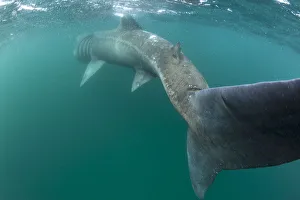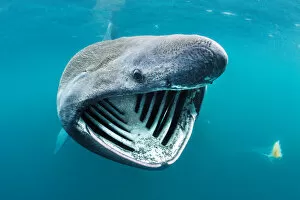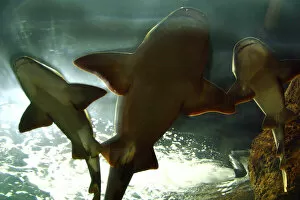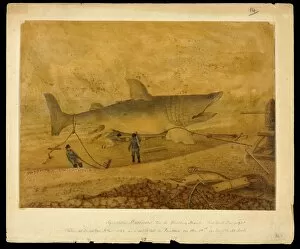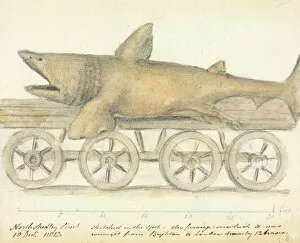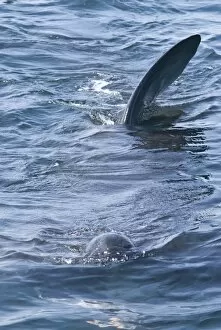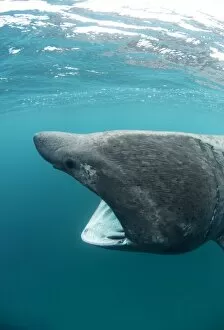Basking Shark Collection
The basking shark, scientifically known as Squalus maximus, is a magnificent creature that has captivated the attention of many throughout history
All Professionally Made to Order for Quick Shipping
The basking shark, scientifically known as Squalus maximus, is a magnificent creature that has captivated the attention of many throughout history. One notable sighting occurred on December 5th, 1812 in Brighton when a basking shark was taken. This particular specimen was described as "a most stupendous basking shark caught within one league of" the area. These gentle giants are often seen feeding on plankton, with their impressive size and unique features visible from different angles. A rear view of a basking shark (Cetorhinus maximus) showcases its feeding behavior as it engulfs vast amounts of plankton. In Scotland's Inner Hebrides, specifically close to the island of Coll in the Atlantic Ocean, these magnificent creatures can be observed feasting on plankton in surface waters during June. The sight is truly awe-inspiring and highlights their importance in maintaining marine ecosystems. Even in captivity at places like Loro Parque in Tenerife, Canary Islands back in 2007, people had the opportunity to witness these incredible animals up close. Basking sharks swimming gracefully through aquariums served as a reminder of their beauty and significance. Artwork from the 19th century further immortalizes these majestic beings. Paintings such as C016/6210, C016/6211, and C016/6213 depict various scenes featuring basking sharks - showcasing both their grandeur and artistic inspiration they have provided over time. Interestingly enough, horses were once used to transport a captured basking shark from Brighton. This historical practice demonstrates not only how massive these creatures can be but also how much fascination they have sparked among humans for centuries.



